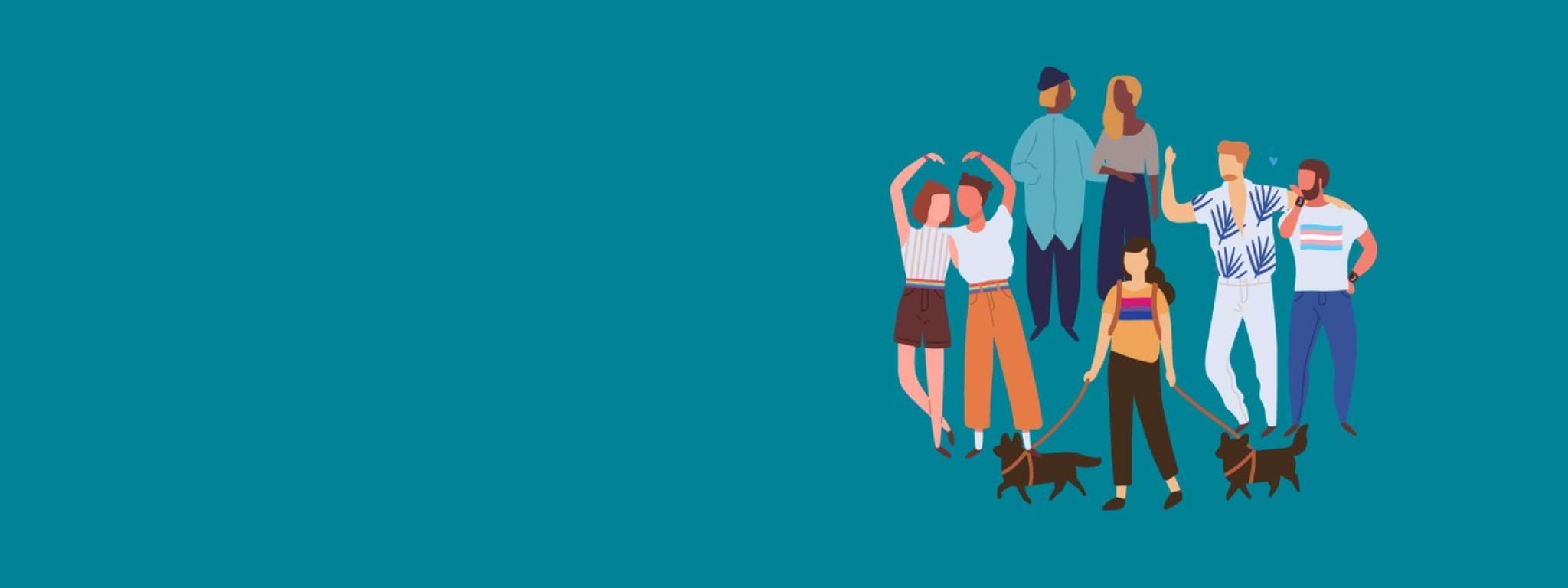Brotherboy and sistergirl: Aboriginal communities use these terms to describe transgender people and their relationships as a way of validating and strengthening their gender identities and relationships. Non-trans but non-conforming Aboriginal people may also use these terms. For example, both lesbian and heterosexual Aboriginal women may refer to themselves as ‘sistergirls’, ‘sisters’ or ‘tiddas’, which is an Aboriginal English term for the word ‘sisters’. Gay Aboriginal men may also refer to themselves as sisters.
Cisgender: Refers to a person whose gender corresponds with their biological sex.
Community-led: This refers to organisations, projects, programs or services led by LGBTIQA+ communities on behalf of and for LGBTIQA+ people.
Equality: This principle is about ensuring every LGBTIQA+ person has an equal chance to make the most of their lives and talents. It means that no one should have poorer life chances because of the way they were born, where they come from, what they believe, or how they identify.
Equity: This principle builds on equality and is about ensuring just and fair inclusion for all LGBTIQA+ people and communities. An equitable society is one where everyone can take part and prosper. The goals of equity are to create conditions that allow all people to reach their full potential. These conditions must recognise that experiences, inequalities and outcomes are not the same across communities.
Gender: Part of how you understand who you are and how you interact with other people. Many people understand their gender as being a man or woman. Some people understand their gender as a mix of these or neither. A person’s gender and their expression of their gender can be shown in different ways, such as through behaviour or physical appearance.
Gender diverse: An umbrella term for a range of genders expressed in different ways. Gender diverse people use many terms to describe themselves. Language in this area is dynamic, particularly among young people, who are more likely to describe themselves as non-binary.
Inclusion: Empowering access to opportunities, dealing with structural inequalities, tackling unconscious bias to have equal access to all parts of society.
Intersectionality: This is an approach to understanding how social meanings related to the way we categorise and identify can overlap and interconnect. This creates different layers and types of discrimination or disadvantage for either an individual or group. Categories include gender, sexual orientation, sex characteristics, ethnicity, language, faith, class, socio-economic status, ability and age.
LGBTIQA+ organisations: This includes organisations, communities or businesses that are community-led. This can mean LGBTIQA+ people run them, steer their boards, or that they are known in community for offering services for LGBTIQA+ people. They are not the same as non-government organisations or mainstream services that may have completed Rainbow Tick accreditation or similar to ensure they are LGBTIQA+ inclusive.
Outcomes framework: A system to track the impact of the LGBTIQA+ strategy’s actions over time. This system will use key data to track how Victorian LGBTIQA+ outcomes change, basing it on the Victorian Outcomes Reform Statement.
People with intersex variations: An umbrella term for people born with natural variations to sex characteristics. This includes physical features relating to sex including genitalia and other sexual and reproductive parts of the person’s anatomy. It might also refer to the person’s chromosomes, hormones and secondary physical features emerging as a result of puberty. Some people with intersex variations describe themselves according to their specific intersex variation or use other context-dependent language. For example, someone may say they have Klinefelter (a common variation). Most people with intersex variations are cisgender and identify as male or female.
Sex: A person’s biological sex characteristics. We have previously understood the term ‘sex’ as either female or male.
Sex characteristics: A person’s physical features relating to sex. This includes genitalia and other sexual and reproductive parts of the person’s anatomy. It also includes the person’s chromosomes, hormones and secondary physical features emerging as a result of puberty.
Sexuality or sexual orientation: A person’s romantic or sexual attraction to others. A person’s gender does not mean they have certain sex characteristics or a particular sexuality, or vice versa.
Trans (short for transgender) person: Someone whose gender does not only align with the one assigned at birth. Not all trans people will use this term to describe themselves.
Updated

